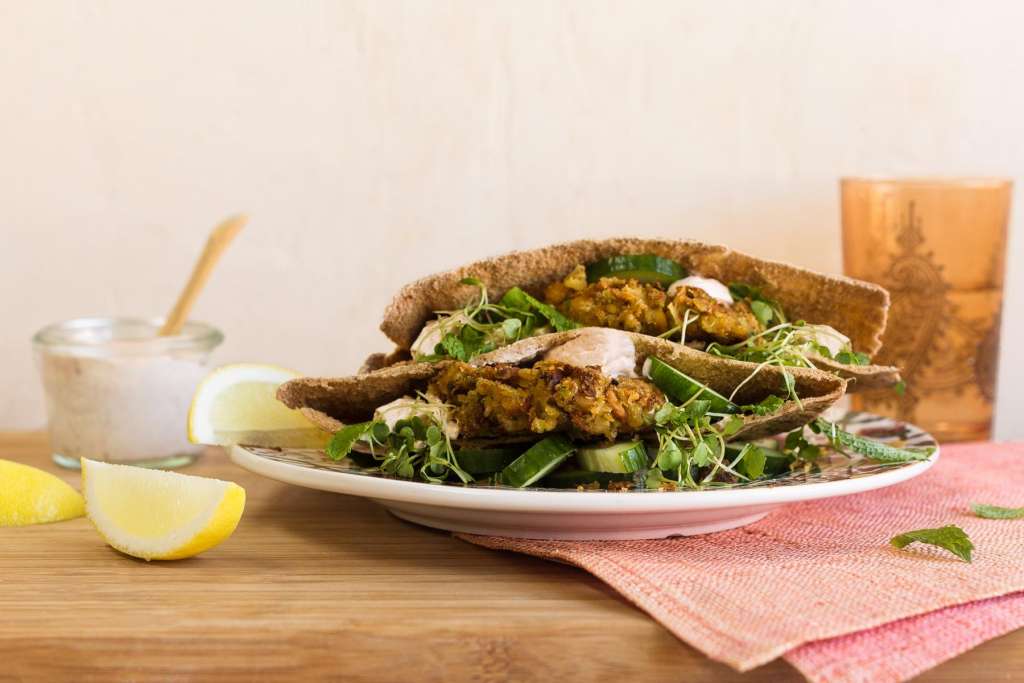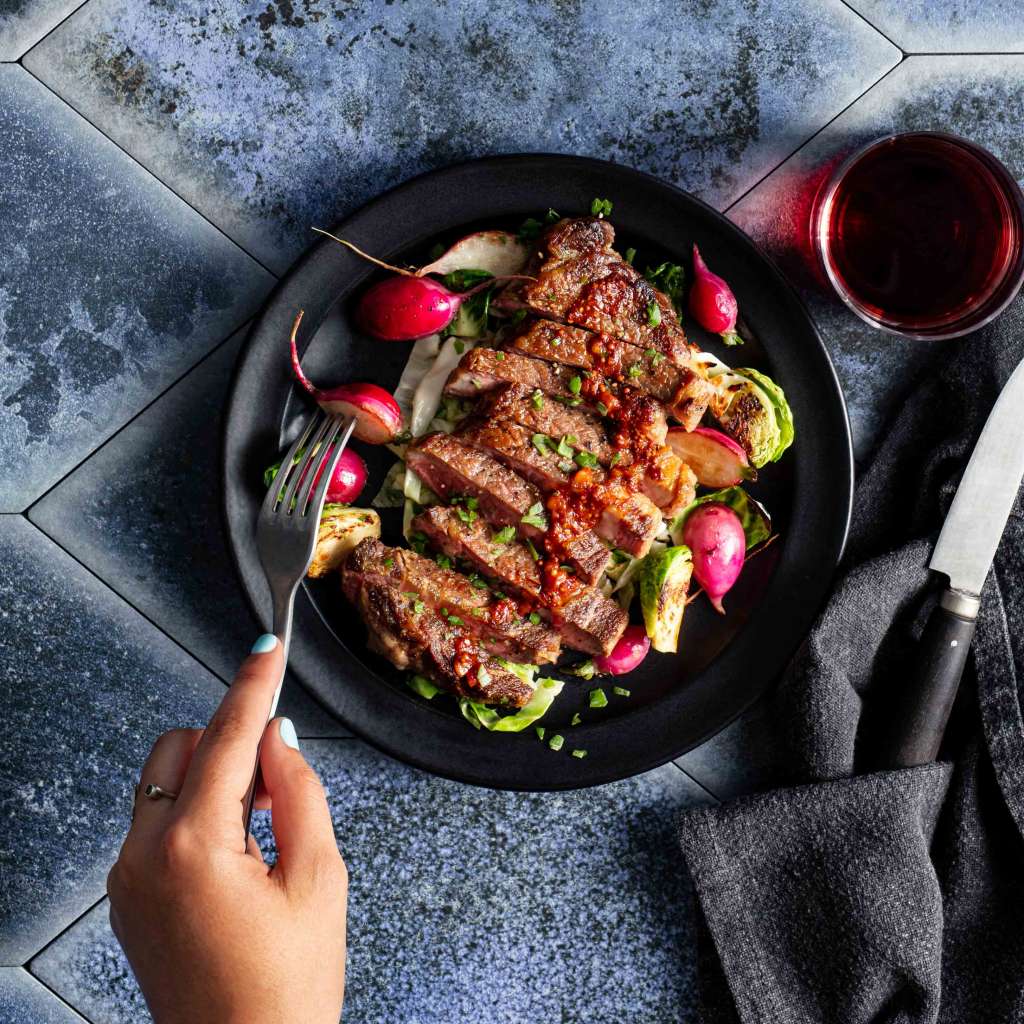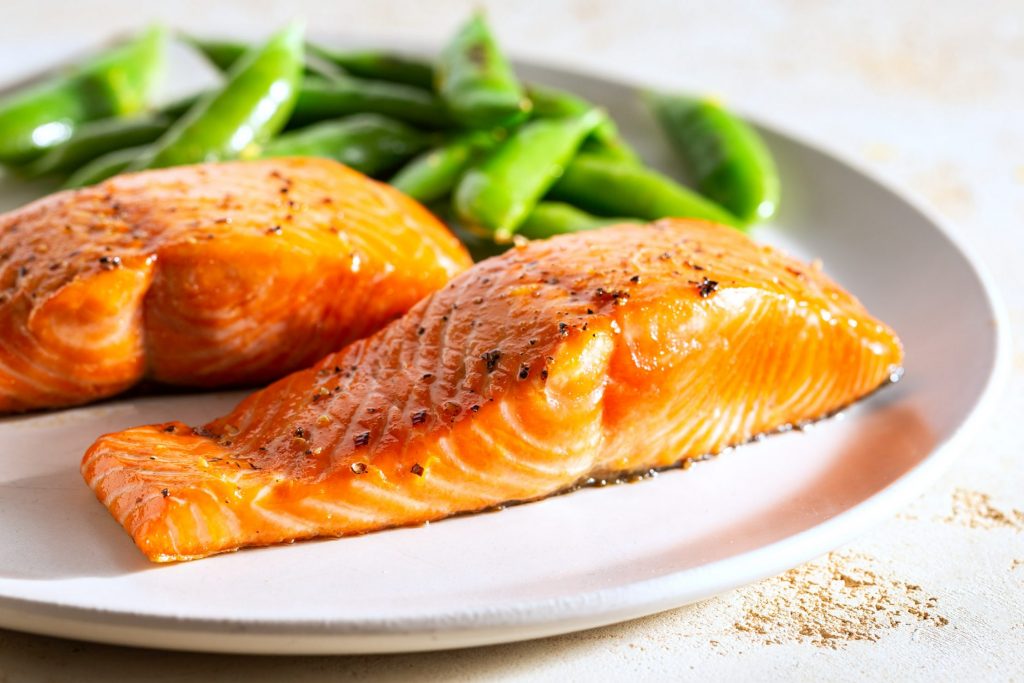8 Ways to Take Better Food Photos with Your Phone

Look up from your matcha cappuccino next time you’re at your favorite coffee shop and it’s a good bet that all around you people will be snapping photos of the latte art and mochi muffins. Everyone’s a photographer, but it takes more than a fancy filter and a beautiful plate of food to take a great photo.
Nicole Beck, Sun Basket’s director of photography, offers some tips on how to take better food photos with your phone. Because, if you ate brunch and didn’t post of picture of it did you really eat brunch?
Three keys to great photos
- Lighting: Great photography, no matter what the subject matter, is all about good light. Overhead and the artificial lighting often found in restaurants or home kitchens are the least flattering. Instead, move close to a window or take your plate outside if possible. Try to find natural, soft window light (streaming in from the side). Using your phone’s flash is one of the biggest mistakes people make when taking photos of food.
- Composition: What else is happening outside of the rim of your dish? It’s easy to focus on a plate of food and forget to look at what else may be visible in the frame. This is where you can get creative. Taking away distractions like the pan you just cooked in or a menu on the table or adding elements like napkins and glassware to the frame can elevate your photo.
- The food, of course: Food has a short lifespan, and after only a few minutes herbs can wilt, sauces can congeal, and meat can start to look dry. It’s important to move fast. When you’re ready to take your shot, do a quick survey to make sure everything looks fresh and delicious.
Find your angle
Show off the graphic quality of flat foods like pizza and open-faced tacos by shooting them from above. Dishes with a lot of height like sandwiches, burgers, and piled-high salads are perfect candidates for side shots, because you often can’t see those vertical details and textures from above.
Food is for friends
Eating is often a very social activity. Including friends and family in the photo adds a human element to the picture and helps tell your story.
Forget the flash
Using your phone camera’s flash is disruptive to other guests, and it also makes food look very unappetizing. Try shooting in HDR mode instead, this is when your phone’s camera takes three photos at once and blends the best parts of each into a single image with better color and details. Then, play around with exposure and brightness settings in your photo editing app.

Keep snapping
Put the food in the best light before you start shooting, then have fun. Try different angles and play around with the placement of other items in the frame. Just don’t go overboard, you don’t want your food (or your dining companions) to wilt because you’ve spent 15 minutes trying to get the perfect shot.
Props or not
If you want to tell a compelling narrative, adding props like condiment bottles, drinks, and things like sunglasses or keys will help you tell your story. If you want to achieve a high-end look, less is more. Keep the focus on the food. Either approach is great. The important thing is to be intentional in your choices.
Settings for success
Try using Portrait mode if you have one of the newer iPhone models. This setting creates a shallow depth of field (blurring out the background while focusing on the foreground object) and also makes your food look crisp and bright. If that’s not an option, you can play with the exposure of your camera’s by tapping the screen when you’re in the camera app. You’ll see the lens refocus, and a small sun icon with a vertical scale will pop up. Slowly move your finger up and down the scale to manually adjust the light level of your photo so it’s not too bright or too dark.
Take a bite
Perfectly plated food can look static. Go ahead a eat a little, break the yolk on a soft-cooked egg, or put a few breadcrumbs on the side of your plate. Your picture will look much more lively.
There’s an app for that
Snapseed and VSCO are lovely tools, especially if you don’t want to rely on filters and want a little more control over your editing.
Think before you filter
Using filters is all about personal preference. Many people like using the same filter for all of their photos on Instagram because it makes their feed look visually cohesive. Think of filters as a way to give photos a style. For instance, the Brannan filter will give a photo a Victorian look, while Hefe gives a vintage 70s vibe. For food, that isn’t always the best way to go. The most important thing is to choose a look (often no filter at all) that makes the food look its best.









